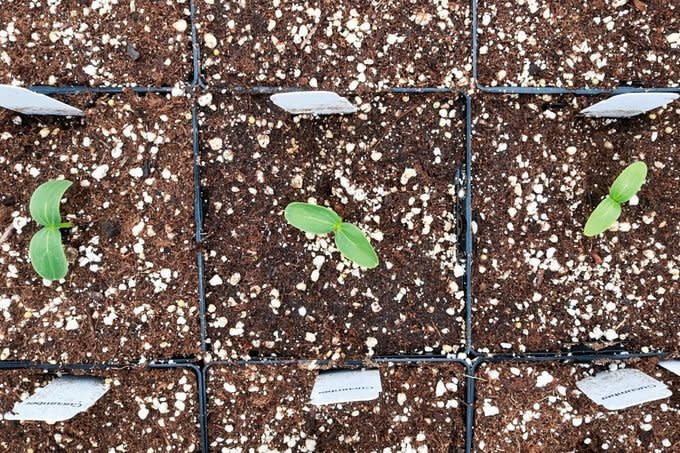How To Garden with Perlite Potting Soil
Those little squishy white balls in your potting soil aren’t styrofoam. They’re actually perlite, AKA volcanic popcorn. In the building industry, perlite is used in ceiling tiles and lightweight masonry fillers. In gardening soil, it’s an inexpensive additive with a wealth of benefits.
“When chosen correctly, perlite can easily help flourish a garden and become a gardener’s best friend,” says Brittany Cowan, expert gardener and inventor of the Drain Away Drain Tray. “Most of all, perlite helps store nutrients and retain moisture that plants need.”
What Is Perlite Soil?
In nature, the mineral perlite comes from water-saturated obsidian, a volcanic glass mined primarily in Greece, the U.S., Turkey and Japan. To turn it into a garden ingredient, it’s crushed and heated to around 900 F.
“As the steam escapes, it expands into the substance we recognize in soil mixtures,” says Cowan. “It becomes quite porous, and those cavities help store nutrients and some moisture.” That volcanic popcorn is then sold as a soil additive, or mixed in with potting soil and seed-starting mixes. Hydroponic gardeners also use it.
Speaking of additives, should you use coffee grounds in the garden?
Benefits of Perlite Soil
Perlite’s main benefit is its high porosity. That’s why it’s so popular in gardening. Other benefits include:
Helps soil drainage, which prevents root rot and increases oxygen to roots;
Helps retain added soil nutrients;
Made from naturally occurring compounds with no toxic chemicals;
Neutral pH;
Retains its shape in a soil mix, even under pressure;
Inexpensive and readily available;
Increases aeration. “Perlite allows for better airflow around the roots of the plants, thus encouraging faster growth and a bigger harvest,” says Cowan.
Disadvantages of Perlite Soil
While perlite is truly a gardener’s friend, it does have a few downsides:
Can blow away in the wind or float in excess water;
Doesn’t add nutrients to soil;
Not a renewable resource.
Is Perlite Soil Safe?

As a naturally occurring mineral, perlite is considered safe and nontoxic. However, when working with fine grades of perlite, wear a mask and protective eyewear to prevent respiratory problems and eye irritations. Don’t forget to keep it away from kids and pets!
How To Use Perlite in Gardening
Gardeners use perlite in several applications:
Soil mixes. Buy it pre-mixed into soils at a garden center, or make your own by mixing up to one-third part perlite with your soil. For succulents and orchids, you can use more. “Make sure to water your plant until the water drains from the bottom of the container,” says Cowan. “But don’t let the plant sit in water.”
Garden beds. Every few years, add a two-inch layer with compost and other soil amendments. It’s optimal to work it into the top six to 12 inches, but some people just scatter it and let it work its way in over time. If you do this, consider getting particles that are not too fine to blow away, but not too coarse to stick on the surface of the soil.
Propagating cuttings and seeds. Put root cuttings in a small jar or plastic bag with moistened perlite. For seeds, perlite can be applied to propagate cuttings as well as starting seeds. Put root cuttings in a small jar or air-filled plastic bag filled with moistened perlite. Seeds can be started in moistened standalone perlite or a 50-50 combination of perlite and soil, which keeps the sprouts from drying out.
Perlite vs. Vermiculite
Perlite and vermiculite both improve moisture retention and help aerate soil. Vermiculite is ideal for plants that need lots of water because perlite dries out faster, says Cowan.
“On the other hand,” she says, “perlite is better for plants such as cacti that need a well-drained soil, where vermiculite would retain too much water and lead to root rot.”
The post How To Garden with Perlite Potting Soil appeared first on Taste of Home.
